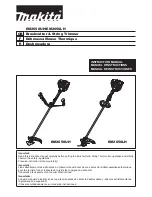
Displayed ripple wavelength L =
1
cm,
set time coefficient
= 10
required ripple freq. F = 1 : (1
=
TV-line frequency F = 15 625 Hz,
set time coefficient
= 10 @cm,
required wavelength L = 1: (15 625.1
=
Sine wavelength L = min.
max. 1 Ocm,
Frequency F = 1
max. time coefficient = 1 :
=
min. time coefficient
= 1
= 0.1
set time coefficient
= 0.2
required wavelength L = 1: (1
0.2 1
= 5cm.
Displayed wavelength L =
set time coefficient
= 0.5
pressed MAG X 10 button:
= 0.05
required rec. freq. F = 1:
= 25 MHz,
required period T = 1: (25.1
= 40 ns.
If the time is relatively short as compared with the complete
signal period, an expanded time scale should always be
applied (X MAG
button pushed). In this case, the ascer-
tained time values have to be divided by
Very small time
intervals at optional points of the signal can be measured
more exactly with the aid of the sweep delay. With it, the
display and measurement of time intervals, which are smal-
ler than 1 % of the full signal period, are possible. The small-
est measurable time interval is, on the whole, dependent on
the obtainable brightness of the CRT. The limit is an expan-
sion of approximately 1000 times. Using a Viewing Hood
HZ47, more expansion is possible, provided that the time
coefficient set on the
switch is greater than
(and using the X MAG x 10 facility) for the signal’s
basic period. Otherwise, the fastest sweep speed deter-
mines the greatest possible expansion.
When investigating pulse or square waveforms, the critical
feature is the
of the voltage step. To ensure that
transients, ramp-offs, and bandwidth limits do not unduly
influence the measuring accuracy, the
is generally
measured between 10% and 90% of the vertical pulse
height. For peak-to-peak signal amplitude of
height,
which are symmetrically adjusted to the horizontal center
line, the internal graticule of the CRT has two horizontal dot-
ted lines
from the center line. Adjust the Y at-
tenuator switch with its variable control together with the
Y-POS. control so that the pulse height is precisely aligned
with the 0 and 100 % lines. The 10
and 90 % points of the
signal will now coincide with the two lines, which have a
distance of
from the horizontal center line and an
additional subdivision of
The
is given by
the product of the horizontal distance in cm between
these two coincidence points and the time coefficient
setting.
If magnification is used, this product must be divided by 10.
The
time of a pulse can also be measured by using this
method.
100%
9 0 %
The above figure shows correct positioning of the oscillo-
scope trace for accurate
measurement.
With a time coefficient of
and pushed X MAG
button the example shown in the above figure results
in a measured total
of
=
10 = 8 n s
When very fast risetimes are being measured, the
times of the oscilloscope amplifier and the attenuator probe
have to be deducted from the measured time value. The
of the signal can be calculated using the following
formula.
t
P
In this
is the total measured risetime,
is the
of the oscilloscope amplifier (approx.
and the
of the probe (e.g. = 2 ns). If
is greater than 42 ns,
then
can be taken as the
of the pulse, and calcu-
lation is unnecessary.
Calculation of the example in
figure above results in a
signal
= V
= 5.1 ns
Connection of Test Signal
Caution: When connecting unknown signals to the oscillo-
scope input, always use automatic triggering and set the
DC-AC input coupling switch to AC. The attenuator switch
should initially be set to
Sometimes the trace will disappear after an input signal has
been applied. The attenuator switch must then be turned
back to the left, until thevertical signal height is
With a
amplitude greater than
an attenuator
probe must be inserted before the oscilloscope’s vertical
input. If, after applying the signal, the trace is nearly
blanked, the period of the signal is probably substantially
Subject to change









































